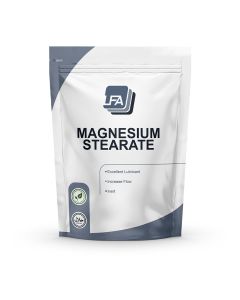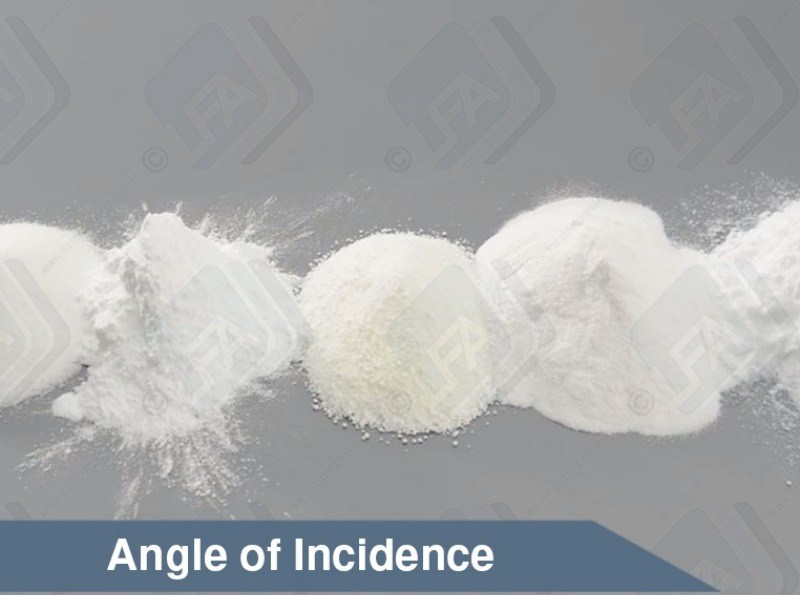どのような賦形剤が理想的ですか?消費者にとって摂取しやすく生産者にとって製造しやすいものがあります。使用に差し支えないだけでなく標準の機能性より広範囲に及ぶ賦形剤です。結晶セルロースは、お客様が探し求めている結着剤かもしれません。メチルセルロースのようなジェル状ではなく、他の結着剤と比較するならば、潤滑剤の感受性をそのままにして最高度の脆性を提供するように見えます。
結晶セルロースの主な利点
- より高い圧縮性
- さらなる流動性
- 強力な結着性
- 無味無臭
- 非反応
- 低吸収
結晶セルロースは一般的にMCCと言い、管理された環境で作られます。最終製品は、不純物を含まない無味無臭の白色粉体で、錠剤に形状や硬さを加えられます。MCCは、必要な希釈剤の優位性を維持します。錠剤やカプセルの増量剤として効果的で、最終消費者にとって好ましい重さを提供します。結晶セルロースは、かさ密度を抑え流動性を増やします。易流動性は、各成分が混合物の隅々まで安定して広がるようにします。混合が安定していれば、各錠剤は最終製品の各成分質量が同一になり高品質な製品を生み出します。
結晶セルロースを選ぶ理由
結晶セルロースはその役割を遂行するだけでなく十分機能させます。他に人気がある賦形剤とうまく機能して多くの配合の不可欠な成分になっています。結着剤は、錠剤の硬さを確保しようとするので錠剤化プロセスで極めて重要です。さらに、圧縮性は、最終製品のあらゆる側面(例えば、粉末化、溶解、結合)に影響を与えます。MCCは直接圧縮できる故、粉末化や混合処理をする必要がなく錠剤を圧縮して製造プロセス全体をより効率的にできます。
圧縮性や結着性は結晶セルロースの疑う余地のない性質です。この性質はどちらも、錠剤化したら容易に溶解する能力を阻むことはありません。MCCは正常量を摂取するのには安全ですし、錠剤化の賦形剤としても広範に使用されています。その上、天然の食物繊維源でノンカロリーです。それ以外に、MCCは不活性で他の成分に反応しませんし他の成分の妨げになることもありません。
要約
総じて、本製品はお客様が探し求めていた製品かもしれません。最高の賦形剤の中で際立った結着性を有しているため人気があります。形成過程は、この成分を受けてより容易になるでしょう。その優位性や用途のおかげで、結晶セルロースは結着剤として相応しい選択肢です。他の賦形剤と併用したMCCは、生産をよりスムーズかつ効率的にします。
| 名称 | 値 |
|---|---|
| CAS番号 | 9004-34-6 |
| 分子式 | (C6H10O5)n |
| 外観 | 白色の微粉末 |
| 物理的状態 | 固形 |
| 保管方法 | 室温で保管 |
| 融点 | 260–270 °C; 500–518 °F; |
| 密度 | 1.5 g/cm3 |
| 水への溶解度 | なし |
| 資料 |
不耐データ 技術仕様書 |
Yes, it does not matter what age, size or sex the person consuming the products is. It is, however, important to check the intolerance data.
Yes, all of the excipients are safe for human or animal consumption. There are some precautions that should be taken when handling them and there are some people that might have intolerances to some of them. Information on this can be found in the products MSDS and Intolerance Data Sheet. This can be found in this section for every excipient.
Yes, there are all of them can be found in the intolerance sheets for each product. The intolerance sheets can be found here: https://www.lfatabletpresses.com/product-data
FFFFFF Yes, all of our Excipients are extracted from natural sources. For more information please visit the individual product pages.
Yes. CoA stands for Certificate of Analysis this is also known some times as an MSDS (Material Safety Data Sheet) all of the information contained in a CoA is inside the MSDS for every LFA product which is emailed to you after purchase.
It is unlikely that you will be able to produce tablets without using any Excipients at all. Certain products do bind without Excipients, but then do not flow through the machine. We advise that you use our Firmapress ready mix as this works with 99% of products.
Yes. There are two things at play here. You can get hygroscopic and hydrophobic excipients. Hygroscopic means that they take on water quickly, while hydrophobic means that they repel water.
There are products know as supper disintegrants. These products help the breakdown of tablets. At the moment LFA does not sell any supper disintegrants.
Magnesium stearate is hydrophobic this means that it will slow the breakdown of a tablet.
However, it is used in such small amounts that most of the time it will not make a difference to our customer's products. If they would like to be sure then they should conduct what is known as a disintegration test.
Firmapress - 2 years form batch date.
Dextrose - 3 years from batch date.
Dicalcium Phosphate - 3 years from batch date.
Microcrystalline Cellulose -
Magnesium stearate -
Lactose - 2 years from batch date.
Silica Dioxide - 2 years from batch date.
here are 6 steps that should be followed as a general rule of thumb when cleaning contact surfaces that have come into contact with powders:
Dry Clean - First you need to remove as much of the dry powder as possible. You can do this using a hover/vacuum. Make sure that the vacuum you are using has a filter good enough to handle fine dust.
Wet Clean - Next you need to perform a wet clean. This can be done with warm water and soap or if available an ultrasonic cleaner.
Rinse - Next you need to rinse off any soap with potable water (drinking water). You do not have to do this if you used an ultrasonic cleaner in the last step. It is important to ensure that all parts are thoroughly dried immediately after washing to avoid any rusting.
Sanitise - Next you need to sanitise the surface. This step is recommended by the FDA. There are a number of sanitising solutions available designed to be applied and left on.
Lubricate - You now need to lubricate any parts that require it. This should be with the appropriate grade oil or grease considering your use and greasing chart. Store - Finally store any of the parts in a cool dry place. If you are storing them on the machine then make sure the machine is in a temperature controlled environment with low humidity.
We offer Microcrystalline Cellulose, Magnesium Stearate, Dicalcium Phosphate and Firmapress in our range of excipients.
Microcrystalline Cellulose is a binding agent, which holds the content of the tablet together.
Dicalcium Phosphate is a flowing agent and helps move ingredients through the machine before they are compressed.
Magnesium Stearate is a dry lubricant and helps again with the movement of ingredients through the machine but also helps with the ejection of the tablets from the machine. Please note that Magnesium Sterate does not bind by itself.
Firmapress is an all in one mix of Microcrystalline Cellulose, Magnesium Stearate and Dicalcium Phosphate.
Dextrose - approx 100 mesh
Dicalcium Phosphate - approx 100 mesh
Microcrystoline Cellulose - approx 120-200
Magnesium sterate -
Lactose - 80 mesh
Silica Dioxide -
Firmapress - 100-200 mesh
Dextrose - Sweetener, binding agent, good for chewable tablets or candy.
Microcrystalline Cellulose - Binder, filling agent. Good at binding tablets and making them bigger. It can also be used as a filler for capsules.
Magnesium stearate - Dry Lubricant. This stops products from getting stuck to the tooling. It can also help with powder flow issues and caking issues.
Lactose - Binder, sweetener and bulking agent. It has a large mesh so it flows well but most people do not like it because of the intolerance issues.
Silica Dioxide - Flowing agent. This assist powders in flowing smoothly through the machines. It also helps with cacking issues where powders get stuck to the machine.
Firmapress - 2 years form batch date.
Dextrose - 3 years from batch date.
Dicalcium Phosphate - 3 years from batch date.
Microcrystalline Cellulose -
Magnesium stearate -
Lactose - 2 years from batch date.
Silica Dioxide - 2 years from batch date.
If your product does not bind well then we would recommend using MCC. This can be used in any % the limiting factor is the size of the tablet.
If the amount of MCC you would have to use would be too much or if you do not want to use MCC then you have 3 other options: Ask your supplier for a directly compressible or tabletable grade of your product. Spray dry your product. Wet granulate your product.
If your product is sticky then you will need to add a dry lubricant to your mix. For this, we recommend magnesium stearate.
We do not recommend that you add more than 1% to the mix as more than this can cause capping. If your product is still sticky at this point then we would recommend looking into granulation.
If your product or API is clumpy then you will need to add an anticaking agent. For this, we recommend silicon dioxide. We only recommend adding a maximum of 2% of this to the mix
 ステアリン酸マグネシウム$29.99
ステアリン酸マグネシウム$29.99








